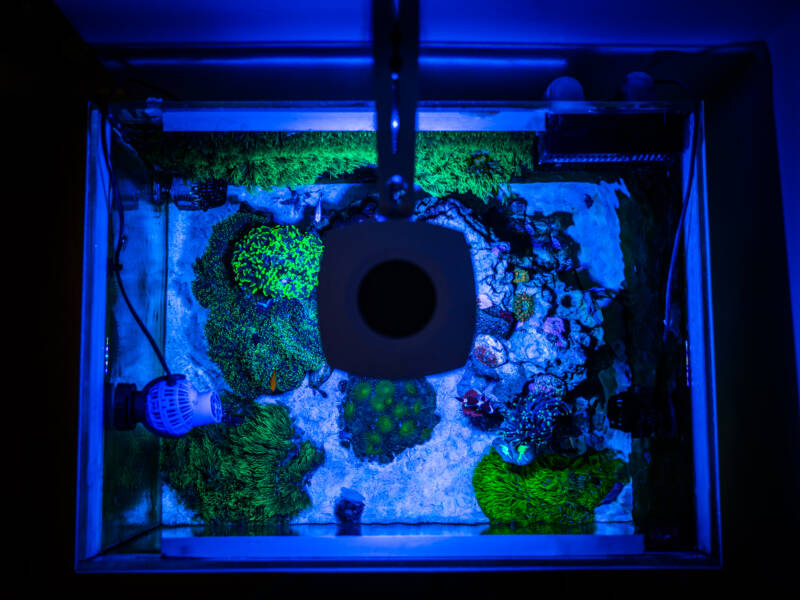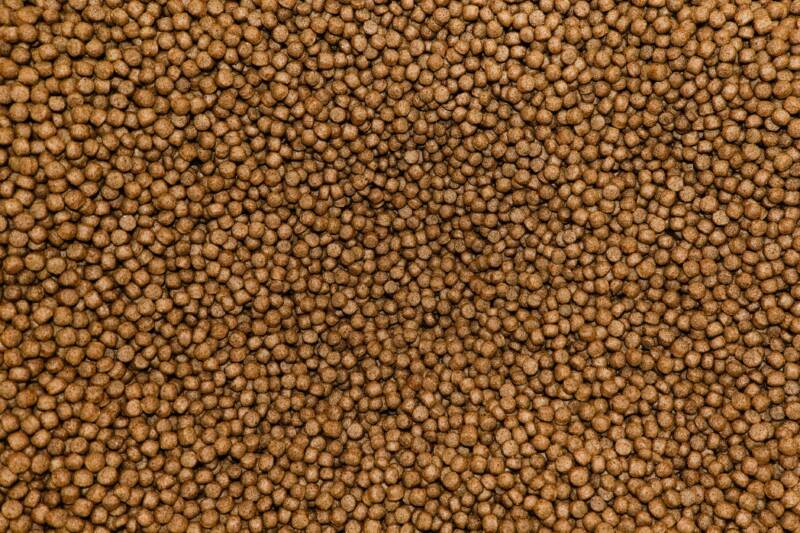Lowering phosphate has always been important for reef keepers.
The fact is, phosphate is an essential element needed by all aquatic life, including fish, invertebrates, and even the bacteria in the biological filter!
Phosphate is also an essential nutrient used by algae. As a result, many aquarists find a rise in phosphate levels causes an increase in algae growth on the aquarium glass, gravel, and live rock.

While phosphate is essential for life, too much in the water can cause problems in the aquarium. So how does phosphate get into the aquarium?
[toc]
Aquarium Phosphate Sources
Phosphate in Tap Water

Phosphate is in most tap water supplies. It is not a health hazard and is not regulated by drinking water laws.
Some municipal water treatment plants add phosphate-based corrosion inhibitors to protect the pipes.
Unless you’re using reverse osmosis water, you’re probably adding phosphate to your tank with every top-off and water change.
Phosphate from Fish Food

Phosphorous is an essential “building block” for cell growth.
It’s also used in life-sustaining enzymes and hormones. Phosphate also helps to maintain blood pH.
Fish food is formulated with phosphate-containing ingredients. Without phosphate, the food would not be able to keep fish alive and healthy.
Uneaten fish food decomposes and releases phosphate into the water.
That’s why over-feeding can stimulate algae growth. Fish waste also adds phosphate to the water.
Coral Foods add Phosphate
Just like fish, invertebrates require phosphorous to thrive.
Liquid and powder coral foods contain phosphorous-rich ingredients.
Live and frozen plankton also contain phosphorous. Even the symbiotic algae living inside corals need phosphate.
Corals food boost growth, but over-feeding can cause a phosphate problem in the water.
Phosphate from Organics

Corals and fish continually release organic slime. The slime contains phosphate.
Dead and dying algae also release phosphate into the aquarium.
Organic sludge in the gravel, behind live rock, and in the filter will rot and release algae-promoting phosphate.
A protein skimmer will remove some of these organics before they release phosphate.
Algae and Phosphates
Phosphate is one of at least 17 essential nutrients algae need to stay alive.
If one or more nutrients are in short supply, algae growth will slow down.
Reef aquarists try to keep phosphate levels low to help starve the algae.
Many aquarists find a rise in phosphate coincides with excess algae on the glass and live rock.
Phosphate and Coral Growth
Research has shown that while phosphate is not directly toxic to corals, it can inhibit the formation of coral skeletons.
Excess phosphate may also slow down the growth of the attractive pink and purple coralline algae that many reef aquarists love.
Recommended Phosphate Levels
Reef aquarists try to keep the phosphate level at 0.02 to 0.05 ppm. But other reef-keepers have a thriving reef at 0.1 ppm or higher.
If your corals are consistently growing and you don’t have algae problems, the phosphate level is acceptable for your aquarium.
If you do have algae problems, lower the phosphates and see how the aquarium responds.
The idea is to bring the level down to where algae growth is under control.
How to Control the Phosphate level
Will Water Changes Reduce Phosphate?
Water changes dilute phosphates but may make a big difference in a high-phosphate tank.
Phosphates are added daily by feeding and natural build-up. Therefore, if your tap water contains phosphate, a reverse osmosis filter is recommended.
A reverse osmosis/DI system will remove phosphate, nitrate, and other pollutants you don’t want to add to your reef.
Protein Skimmers and Phosphate
A protein skimmer will remove organics before they decay and release phosphate into the aquarium.
Protein skimmers won’t remove phosphate that is already in the water.
Granular Ferric Oxide
One of the most effective ways to remove phosphate from the water is with granular ferric oxide or “GFO” for short.
GFO is a dark reddish, granular media. It’s red because of the iron content of the granules.
GFO is smaller than activated carbon. It is typically used in a filter bag or media contactor.
You can place a bag of the media in any filter or in the filter sump. The iron in GFO binds with phosphate as water flows through the media.
Phosphate binds to the surface of the GFO granules. Silicate, which is used by diatom algae, is also removed by granular ferric oxide media.
Tips for Using GFO
You may have to give your GFO a quick rinse to wash away fine particles. Fine-mesh filter bags work very well for rinsing and using it in your filter.
GFO can react with calcium carbonate. This will lower alkalinity, calcium, and pH levels in your aquarium.
Most reef aquarists monitor and regulate calcium, alkalinity, and pH as part of water quality maintenance.
But it is important to be aware that these levels can be affected by GFO.
You can use less GFO directed on the product label. This will allow you to see how much of an effect the brand of GFO will have on your aquarium.
Closing comments
If this is your first time using GFO, be sure to monitor your water chemistry for the first few weeks.
You may have to add extra calcium, magnesium and boost the alkalinity.
If phosphate is a problem in your aquarium, feed properly, run a protein skimmer and use GFO as needed to keep phosphates under control.
